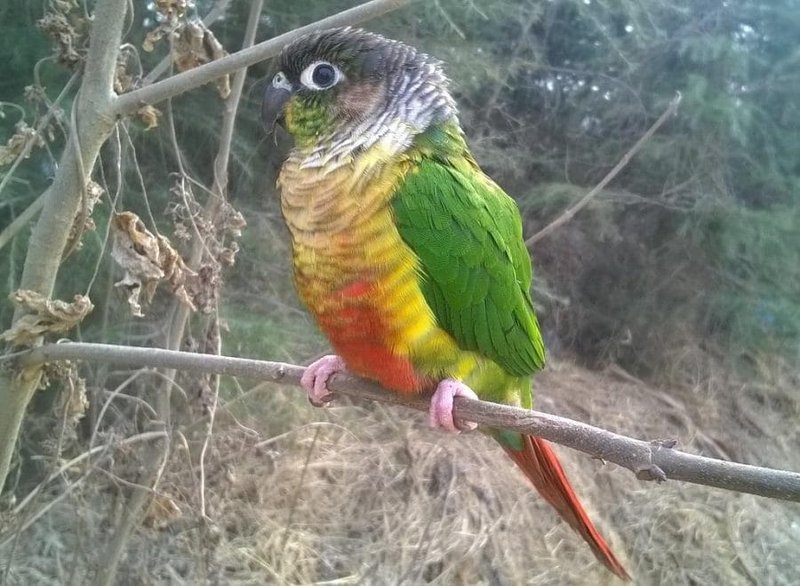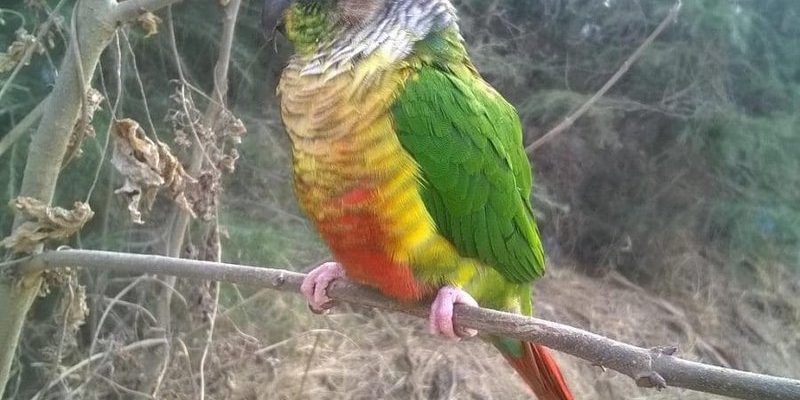
Conures are native to the Americas, found across a range of habitats from tropical rainforests to arid scrublands. Imagine wandering through a dense jungle, where the air is thick with the sounds of chirping and chattering. That’s where conures thrive, flitting about from tree to tree. Let’s dive into their habitats, migration patterns, and each region’s unique conure species.
Understanding Conure Species
Before we explore their habitats, it’s essential to know that “conure” refers to several species of parrots, mainly from the family *Psittacidae*. Think of them like a large family of colorful cousins, each with its quirks and preferences. The most commonly known conure species include the Green-cheeked Conure, Sun Conure, and Jenday Conure.
These birds typically enjoy a warm, tropical climate, but they can adapt to various environments. You might be wondering, “Are all conures found in the same place?” Not quite! Each species has a distinct range. For instance, while the Sun Conure is prevalent in northeastern South America, the Green-cheeked Conure calls central South America home. Familiarizing yourself with these species makes spotting them easier and more fun.
Amazon Rainforests: A Conure Paradise
If you’re dreaming of spotting conures in their natural habitat, the Amazon Rainforest is top of the list. This unimaginably vast jungle is home to many conure species. Picture yourself meandering through towering trees, where the humidity settles on your skin and the vibrant colors of conures flash above you.
In the Amazon, the Sun Conure and Blue-crowned Conure can often be seen socializing in flocks. They thrive in the lush canopies, munching on fruits and seeds. Additionally, the dense foliage offers shelter from predators, making it an ideal spot for them to nest and raise their young.
However, finding them in the wild can be tricky. Conures are usually more active during the early morning or late afternoon when they forage for food. So, if you’re planning a trip to the Amazon, set your alarm early!
Dry Forests of Central America
Moving northward, the dry forests of Central America provide another chance to spot conures. Here, you’ll find species like the Jenday Conure and Nanday Conure. These birds thrive in open areas, making them easier to spot than their rainforest cousins.
Imagine walking through sunlit paths lined with cacti and dry shrubs. Although it might seem barren, these habitats are rich with life. Conures in these regions adapt well, often nesting in tree cavities or using old woodpecker holes. The Nanday Conure, with its unique black head and bright green body, stands out against the dry backdrop.
You might even come across a flock of Jenday Conures, their bright orange and green feathers creating a vibrant spectacle against the earthy tones of their environment. Just remember, this region can be sweltering, so stay hydrated while observing these amazing birds!
Coastal Areas: A Temporary Home for Conures
What about spotting conures in coastal regions? Surprisingly, some conure species, like the Sun Conure, make the coastal areas of northeastern South America their home during certain seasons. These birds enjoy the combination of warm weather and plentiful food sources provided by fruit trees lining the shores.
Near coastlines, conures can be seen gathering in large flocks. It’s quite a sight! As they swoop in and out to feed on nearby fruits, their vibrant colors create a stunning tapestry against the blues of the ocean. If you’re exploring the coastal areas of Brazil or Suriname, keep an eye out for these social birds. They often enjoy mingling with other bird species, making the experience even more rewarding.
Urban Environments: Conures on the Move
Believe it or not, conures can also adapt to urban settings! In cities like San Diego or Miami, conures have found a way to thrive among skyscrapers and palm trees. The Green-cheeked Conure is often spotted fluttering around local parks and gardens, having settled into these areas with ease.
These urban-loving conures still require natural food sources and often feed on fruits and seeds from local trees. The best time to spot them in these urban environments is during the early morning or late evening when they’re most active. Plus, listening for their bright, cheerful calls can help pinpoint their location.
However, do keep in mind that while urban environments provide a stable food source, they also come with challenges like pollution and traffic hazards. It’s a testament to their adaptability that they can make the most of both natural and human-altered landscapes.
Conservation and Habitat Preservation
With many conure species facing habitat loss due to deforestation and urbanization, conservation efforts are more critical than ever. Protecting their natural habitats ensures that these beautiful birds can continue to thrive in the wild. Organizations are working hard to restore forests and promote sustainable practices that help preserve conure populations.
You can contribute to these efforts too! Whether by supporting conservation programs or simply spreading the word about the importance of protecting these habitats, every little bit helps. By caring for our environment, we’re also caring for the incredible wildlife that inhabits it, including the playful conure.
In conclusion, spotting conures in the wild can be an enchanting experience, whether you’re trekking through the Amazon Rainforest, exploring dry forests in Central America, or walking through urban parks in your city. Each habitat hosts unique conure species, bringing their charming personalities to life.
As you embark on your birdwatching adventures, remember to enjoy the moments, be patient, and respect their spaces. With a little luck and a keen eye, you’ll witness the joy of these vibrant birds in their natural habitat. Grab your binoculars, hit the trails, and be ready to enjoy the colorful world of conures!

